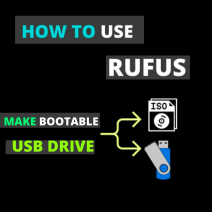Key Details of
How to use Rufus
- Rufus is primarily used to create bootable USB drives. This is useful for installing operating systems like Windows or Linux on a computer without an optical drive, updating firmware or BIOS, and creating rescue disks.
- Many Linux distributions provide ISO images for creating bootable USB drives. Rufus can be used to write these images to a USB drive, allowing you to run or install Linux on different computers.
- Rufus can create bootable USB drives for system recovery and repair purposes. You can use it to access recovery tools or perform system diagnostics.
- Some hardware manufacturers provide firmware updates in the form of bootable ISO images. Rufus helps you create bootable USB drives for updating BIOS or firmware on motherboards, graphics cards, and other components.
- Rufus provides options for securely wiping data from USB drives and formatting them for reuse.
- You can use Rufus to create rescue disks for various purposes, such as recovering data from a damaged system or removing malware.
Developer Description
A tool called Rufus Latest Version to Create a Bootable Installation aids in formatting and produces bootable USB flash devices, including memory sticks and USB keys/pen drives.
If you need to produce USB installation media from bootable ISOs (Windows, Linux, UEFI, etc.); work on a system without an OS installed; flash a BIOS or other firmware from DOS; or want to run a low-level program, it can be extremely helpful in these situations. Rufus is compact, but it has everything you require.

